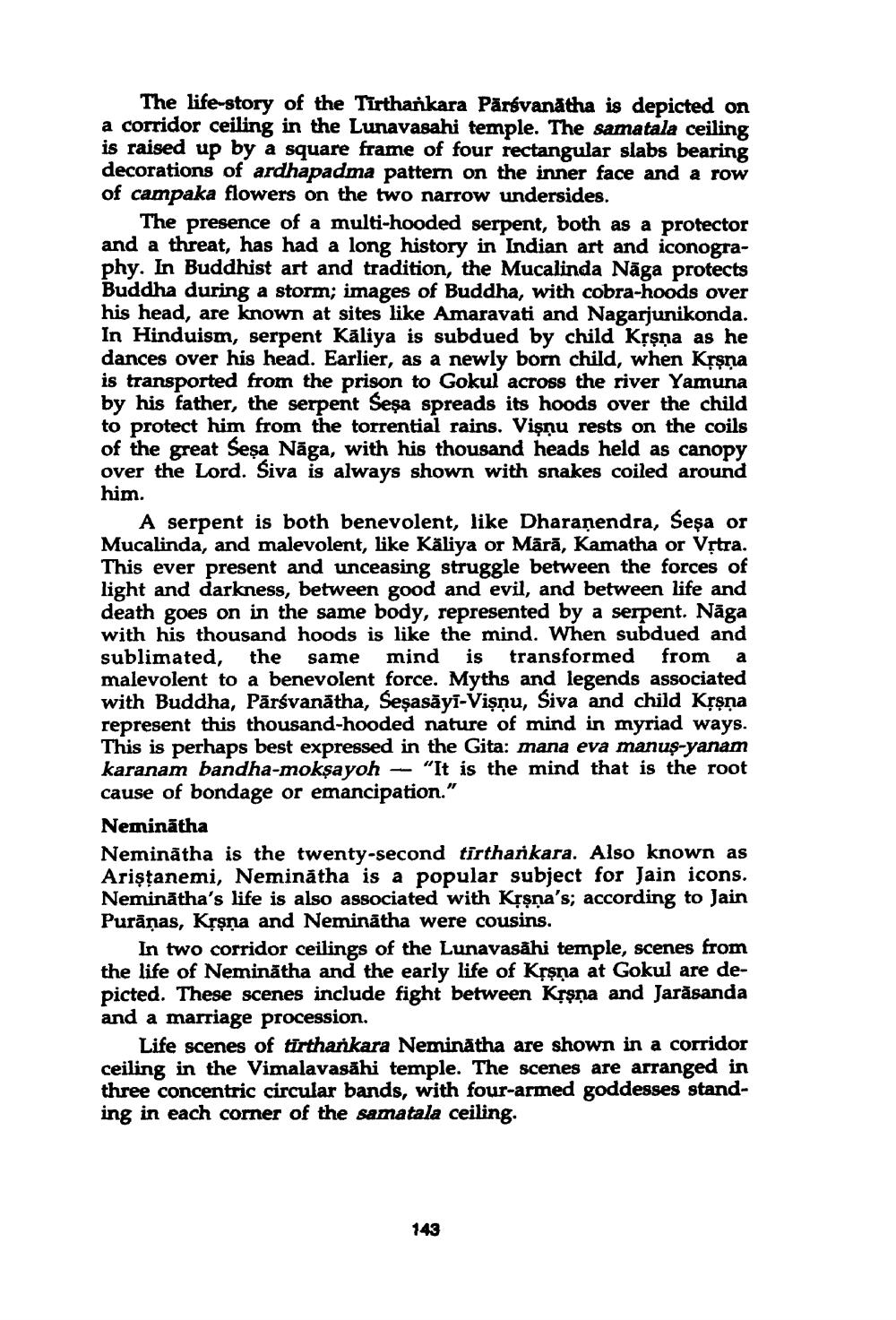________________
The life-story of the Tirthankara Pärsvanatha is depicted on a corridor ceiling in the Lunavasahi temple. The samatala ceiling is raised up by a square frame of four rectangular slabs bearing decorations of ardhapadma pattern on the inner face and a row of campaka flowers on the two narrow undersides.
The presence of a multi-hooded serpent, both as a protector and a threat, has had a long history in Indian art and iconography. In Buddhist art and tradition, the Mucalinda Nāga protects Buddha during a storm; images of Buddha, with cobra-hoods over his head, are known at sites like Amaravati and Nagarjunikonda. In Hinduism, serpent Kāliya is subdued by child Krşņa as he dances over his head. Earlier, as a newly born child, when Krşņa is transported from the prison to Gokul across the river Yamuna by his father, the serpent Sesa spreads its hoods over the child to protect him from the torrential rains. Vişnu rests on the coils of the great Seșa Nāga, with his thousand heads held as canopy over the Lord. Siva is always shown with snakes coiled around him.
A serpent is both benevolent, like Dharanendra, Sesa or Mucalinda, and malevolent, like Käliya or Mārā, Kamatha or Vţtra. This ever present and unceasing struggle between the forces of light and darkness, between good and evil, and between life and death goes on in the same body, represented by a serpent. Nāga with his thousand hoods is like the mind. When subdued and sublimated, the same mind is transformed from a malevolent to a benevolent force. Myths and legends associated with Buddha, Pārsvanātha, Seṣasāyi-Vişnu, Siva and child Krşņa represent this thousand-hooded nature of mind in myriad ways. This is perhaps best expressed in the Gita: mana eva manus-yanam karanam bandha-mokşayoh "It is the mind that is the root cause of bondage or emancipation." Neminātha Neminātha is the twenty-second tirtharkara. Also known as Aristanemi, Neminátha is a popular subject for Jain icons. Neminātha's life is also associated with Kțsna's; according to Jain Purānas, Krsna and Neminātha were cousins.
In two corridor ceilings of the Lunavasāhi temple, scenes from the life of Neminātha and the early life of Krşņa at Gokul are depicted. These scenes include fight between Krşņa and Jarāsanda and a marriage procession.
Life scenes of tīrthankara Neminātha are shown in a corridor ceiling in the Vimalavasāhi temple. The scenes are arranged in three concentric circular bands, with four-armed goddesses standing in each corner of the samatala ceiling.
143




